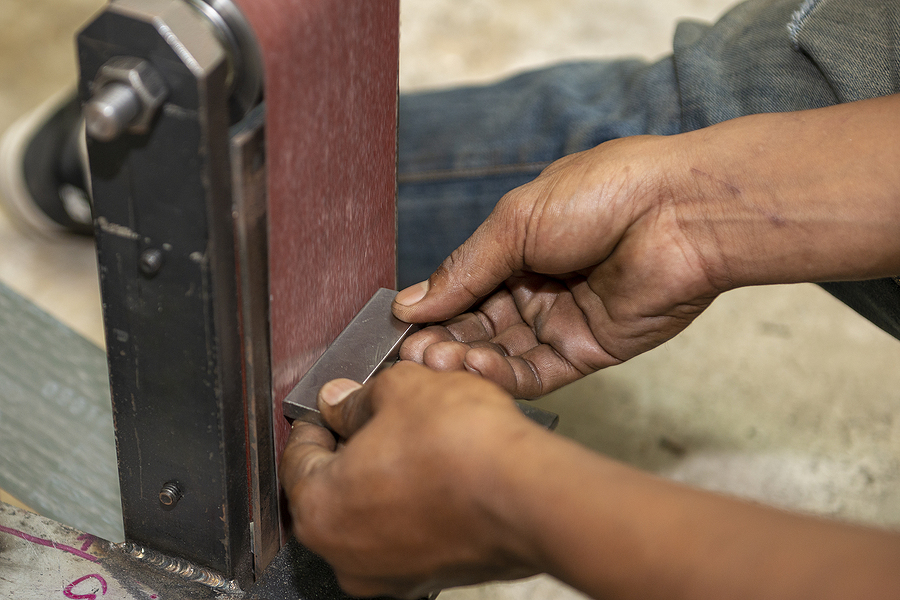Posted by Sandpaper America on Nov 20th 2023
From Coarse to Fine: An In-Depth Look at Sandpaper Grits and Their Uses
Welcome to our comprehensive guide, "From Coarse to Fine: An In-Depth Look at Sandpaper Grits and Their Uses". This blog post will delve into the fascinating world of sandpaper grits, unraveling their various types and unique applications.
Whether you're a seasoned professional or a DIY enthusiast, understanding the right grit for your wood or metal sanding project can significantly influence the final product's quality. Buckle up as we journey from the roughest to the finest, shedding light on how each grit contributes to your project's success and how to choose the right one for optimal results.

What is Sandpaper Grit?
Before we dive into the different types of sandpaper grits, let's first understand what sandpaper grit actually means. In simple terms, sandpaper grit refers to the abrasive particles on the surface of a paper or cloth backing that are used for smoothing and polishing surfaces. These particles vary in size and shape, ranging from coarse to fine. The larger the grit number, the finer and more densely packed the abrasive particles are on the surface. This means that a higher grit number will result in a smoother finish on your woodworking or metalworking project.
Types of Sandpaper Grits
Sandpaper grits come in various types, each with its own unique characteristics and uses.
Coarse Grits
Coarse grits typically range from 40 to 60 grit and are ideal for heavy stock removal, such as stripping old paint or rust, shaping wood, and leveling uneven surfaces. The abrasive particles on coarse grit sandpapers are larger and more widely spaced, resulting in a faster material removal rate. They are also less prone to clogging with debris, making them the go-to choice for initial sanding.
Medium Grits
Medium grits fall in the range of 80 to 120 and are ideal for smoothing rough surfaces and removing scratches or imperfections. They are also suitable for preparing surfaces before applying a finish, such as staining or painting. The abrasive particles on medium grit sandpapers are smaller and more closely packed than coarse grits, resulting in a smoother finish.
Fine Grits
Fine grits range from 150 to 220 and are perfect for final sanding before applying a finish. They are also suitable for light material removal and smoothing surfaces that have already been sanded with medium grits. The abrasive particles on fine grit sandpapers are even smaller and more densely packed, resulting in a silky smooth finish.
Super Fine Grits
Super fine grits go beyond 220 and are primarily used for polishing and buffing surfaces. They are also suitable for sanding between coats of paint or finish to achieve an ultra-smooth surface. The abrasive particles on super fine grits are tiny and tightly packed, resulting in a mirror-like finish.
Choosing the Right Grit
Choosing the right grit is crucial for achieving the desired results in your sanding project. As a general rule, coarse grits are best for heavy material removal, medium grits for smoothing surfaces and removing imperfections, fine grits for final sanding before finishing, and super fine grits for polishing and buffing. However, the grit numbers may vary depending on the type of material you are sanding. For example, wood requires a higher grit than metal, as it is a softer and more delicate material. It's also important to consider the condition of the surface you're working on. If it's heavily damaged or has deep scratches, starting with a coarse grit and gradually moving to finer grits may be necessary.
Conclusion
Sandpaper grits play a vital role in achieving a professional-looking finish on your wood and metal projects. Understanding the different types of grit and their uses can greatly impact the quality of your work. Whether you're looking to remove old paint, smooth rough surfaces, or achieve a polished finish, there's a sandpaper grit for every need. So, the next time you embark on a sanding project, keep in mind the various grit options and choose wisely for optimal results.
If you're in Indiana and searching for the highest quality belt sander abrasives, look no further. Call Sandpaper America to order high-quality sanding belts at affordable prices. We manufacture all of their sandpaper and abrasive products in-house, so you can trust their quality and dependability. We offer cloth x-weight belts, J-weight belts, zirconia belts, pump sleeves, and more!
Related Posts:
How
to Choose the Right Sandpaper Grit For Your Project
The
Correct Sandpaper Grits for Sanding Car Paint
Which
Sandpaper Grit Do I Use on Metal?

